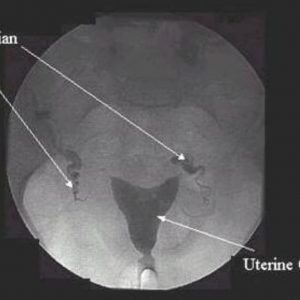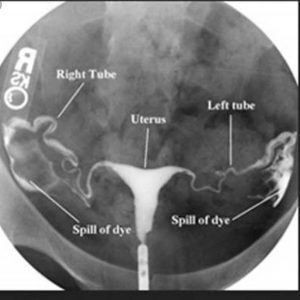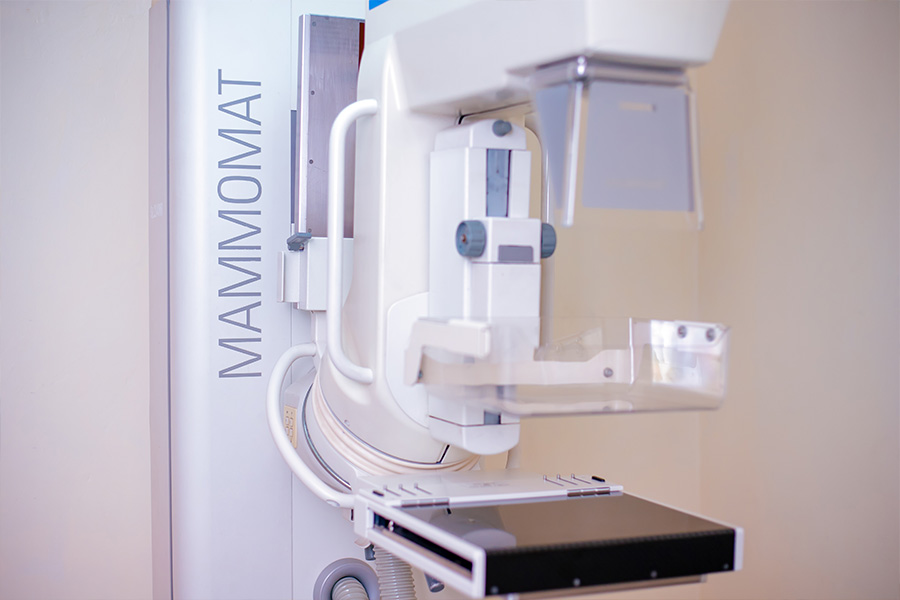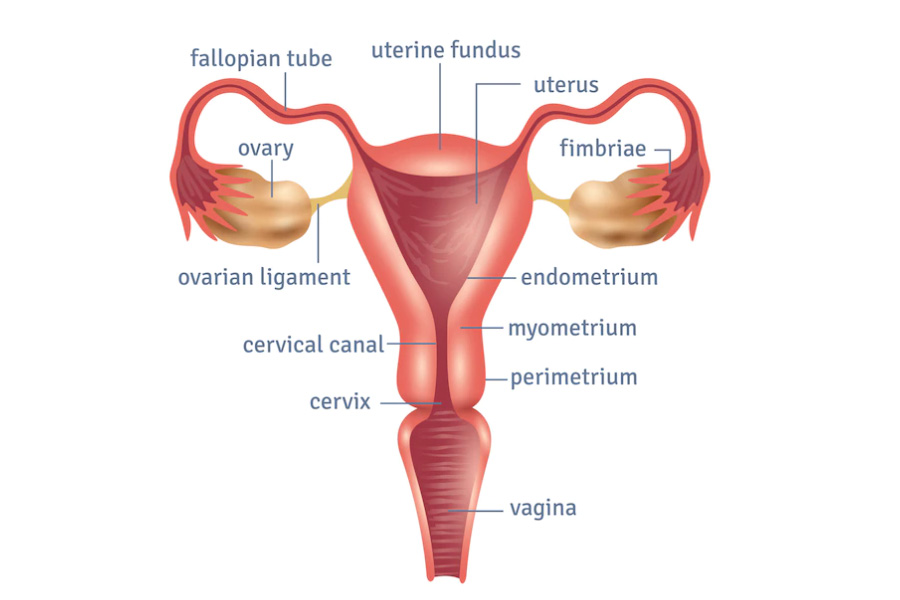Mammograms
A mammogram is a special type of x-ray that uses low energy x-rays to examine breast tissue for diagnosis and screening purposes.
A mammogram is useful for the early detection of breast cancer. It identifies micro and macro calcifications(lumps) and masses in breast tissue. Women over 40yrs are at a higher risk of developing breast cancer and thus it’s recommended that they get an annual screen. For ladies under 40yrs, a breast ultrasound is ideal.
The test can be performed on both male and female genders.
How it’s done;
1. The procedure is explained for client understanding and to minimize discomfort
2. The client is required to remove aĺl upper garments to fully expose the breasts
3. Stand facing the mammogram machine then place breast (one at a time) between the two plates.
4. The upper plate on the machine is lowered to compress the breast . This helps to flatten the breast tissue and eliminates movement for better image clarity.
5. Images are taken from different angles, at least 4 different views.
The procedure is not painful but the compression may be uncomfortable for small breasted people. The good news is that it takes about 10 minutes to complete.
A radiologist report is usually ready in 10-15 minutes
No booking or special arrangement is required. This test is not covered by NHIF however, some of the other medical covers do. For enquiries, kindly reach us on 0722149505
Hypertension in Pregnancy
Did you know?
Hypertension affects about 10% of all pregnant women and is the commonest condition seen during pregnancy.
– Pre-existing hypertension is hypertension that is identified before the onset of pregnancy or diagnosed before 20 weeks of pregnancy.
– Gestational hypertension is diagnosed for the first time at or after 20 weeks gestation & resolves within 12 weeks post delivery.
– Preeclampsia is diagnosed after 20 weeks and resolves before 12 weeks postpartum.
Common tests requested to aid in management are;
URINALYSIS, CBC, U/E/C, LFTs and or imaging.
Known risk factors include:
1. Race (blacks most affected)
2. History of preeclampsia
3. Diabetes mellitus
4. Maternal age <18 or >35
5. Obesity
6. Pregnancy interval <2 or >10yrs
Symptoms may include;
– swelling especially of hand and face
– Elevated BP >140/90
– Headache
– Blurry vision
-Epigastric pain
– Abnormal bleeding especially abruptio placenta.
– Shortness of breath
– Poor urine output
– Blindness
-CONFIRMED ONLY BY REGRESSION OF SYMPTOMS AFTER DELIVERY
Scanlab: Your lab and imaging solutions partner
Contact us on; 0722149505/0717535037
info@scanlabkenya.com
Vaginal Discharge
All You Need To Know About Vaginal Discharge
Are you aware of the difference between normal vaginal discharge and abnormal vaginal discharge? With all things being equal, vaginal discharge is a natural part of being a woman, but sometimes changes in it can indicate a problem. Understanding these changes will help you know when there is a problem.
The Natural Vagina
Basically, the function of your vagina is to provide access to your uterus and the rest of your internal reproductive system. The natural, acidic, pH of your vagina acts to prevent infections by the natural, good, bacteria present in it.
Naturally, your vagina cleans itself by producing clear, mucus-like secretions. However, the natural balance of the vagina can be disturbed by anything that interferes with its normal environment.
Normal Discharge
Note that, all women experience some amount of vaginal discharge. This is because Glands in your vagina and cervix produce small amounts of fluid that flows out of your body every day, taking with it old cells.
This normal discharge cleans the vagina, keeps it lubricated and free from infection and other disease causing agents (germs). It doesn’t have a foul smell and normally has no odor at all. Normal discharge always appears clear or milky when it dries on your panties. Sometimes though, you may observe a discharge that is thin and stringy or stretchy looking.
Look at the list of things that can disturb the natural pH balance of your vagina and lead to vaginal infections:
Menstrual Period Affects Vaginal Discharge
Your menstrual cycle has a serious effect on the kind of vaginal discharge that you encounter throughout the month. Midway between your periods, you will observe a normal increase in clear vaginal discharge. This occurence (of increased wetness and clear vaginal discharge) shows you are ovulating. Ovulation is the time of the month when you are fertile and can get pregnant.
Please note that you’re more likely to have vaginal infections just before or during your period. The reason for this is that the pH balance of your vagina fluctuates during your monthly cycle. This in turn causes the acidic level of your vagina to be at its lowest point a few days before your period and also during your period.
Contraceptives can also affect vaginal discharge
Hormones contained in contraceptives affect women differently, some have reported increased discharge while others have noted a reduction. Your doctor can help you identify if this is the cause and advice on how to manage it.
Signs of Abnormal Discharge
A very important fact is that you need to recognize the signs of abnormal vaginal discharge because it could be an indication that you have an infection or other health condition. If your vaginal discharge suddenly and randomly increases, this is sign that there may be a problem. Another thing that may signal a problem is if your discharge is yellowish or greenish in color. If you have a thick clumped or chunky discharge or a very watery discharge, you can also suspect that things are not well in your vagina.
The following signs in your discharge may indicate an infection:
★Changes in color, consistency (sometimes similar to cottage cheese), or amount
★Itching, discomfort, or a rash
★Vaginal burning during urination
★The presence of blood when it’s not time for your period
★A foul odor accompanied by yellowish, greenish, or grayish white vaginal discharge
If you notice any of the above signs with your vaginal discharge, it is advised that you consult your health care provider for diagnosis and treatment.
Also NOTE What Different Kinds of Discharge Indicate
√ If your discharge is whitish to pale yellow and thick and clumped and you have vaginal itching or burning you most likely have a vaginal yeast infection.
√ If you have a discharge that is heavier than usual, and at the same time watery and grayish in color with a foul fishy odor, you may suspect bacterial vaginosis.
√ If your vaginal discharge suddenly increases in amount, is green or yellowish and has bad odor, or is causing vaginal symptoms you are advised to see a doctor to diagnose the cause and to provide treatment.
Most Common Causes Of Vaginal Infections
Here are the most notable causes of abnormal vaginal discharges:
1. Bacterial vaginosis (BV): This is the most common vaginal infection, caused by bacteria. It is treated with antibiotics and won’t respond to over-the-counter treatments for yeast infection.
2. Vaginal yeast infections: Vaginal yeast infections are also very common and over-the-counter treatments are available. However, it’s important to never self-diagnose a vaginal yeast infection unless you have previously been diagnosed by your health care provider.
3. Trichomoniasis
4. Chlamydia
5. Gonorrhea
6. Forgetting to remove a tampon (A tampon is a feminine hygiene product designed to absorb the menstrual flow by insertion into the vagina during menstruation. Once inserted correctly a tampon is held in place by the vagina and expands as it soaks up menstrual blood)
4. Other sexually transmitted diseases (STDs) or infections (STIs)
Diagnosis
Common tests requested to confirm, rule out or identify type of infection are;
1. Urinalysis- it’s a basic test on your urine that checks for infection by analysing the color, pH, and presence of normal/abnormal cells in urine.
2. High vaginal swab (HVS)- a swab of vaginal discharge is put in culture media (food for microorganisms with nutrients essential for their growth) and incubated to allow time for growth. Growth identifies type of organism= type of infection and helps your doctor to prescribe the right type of medication.
NB: there are specific tests for different types of STIs. Your doctor will request for a specific test based on your symptoms and history.
Treatment
The treatment provided for vaginal discharge depends largely what caused it in the first place.
Prevention and management tips
1. Always wear cotton underwear
2. Practise good personal hygiene (keep your vagina clean and dry)
3. Avoid use of scented pads, tampons or soaps (they contain chemicals that alter vaginal pH)
4. Drink natural yoghurt
5. Drink lots of water
6. Avoid douching and inserting foreign objects into your vagina
7. Avoid clothing that is too tight (your vagina needs to breathe)
You may be Constipated
Ever had the urge to pass stool, you know the kind that makes you feel paralysed, like everything is about to come out right now….so you rush to the toilet and carry the full tissue roll just in case…lock the door behind you, position yourself and push with all the strength you can muster then after a full excruciating minute comes: Plonk!- a pebble sized product and staring at it you’re sure there’s like 5kg of those pebbles still stuck in the pipes….
It’s possible that you’re CONSTIPATED
Constipation refers to less than 3 bowel movements a week, so for those who are proud of their ‘disciplined’ bowels because they ‘only go once or twice a week’, those pipes aren’t disciplined, they are clogged and need medical attention.
SYMPTOMS OF CONSTIPATION
* Infrequent bowel movements
* Small, hard to pass stool
* The feeling that something remained up there after visiting the toilet
* Tearing of skin around the anus ( anal fissure) after passing stool
So what causes this uncomfortable and sometimes painful situation?
1. Inadequate water intake tops the list- Water softens your stool among many other important functions.
2. Not enough fibre in your diet- fibre is the indigestible part of plant foods ( not found in meat)e.g vegetables,fruits, grains (does not include beer) e.t.c, it helps in digestion and aids in bowel movements.
3. Physical inactivity- regular exercise can strengthen your digestive tract.
4. Medication- some medicines cause constipation e.g. antidepressants
5. Ignoring the urge to poop- your body has no consideration for where you are, who you might be trying to impress or the state of the toilets readily available, when it prompts you that it’s time to poop, do your best to do so because the longer you retain stool in your body, the harder it becomes and it will be more difficult to pass.
6. Stress- affects how the body functions.
7. Overuse of laxatives.
There could be a more serious underlying condition like bowel obstruction, colon cancer etc so kindly contact your doctor if you have less than 3 bowel movements a week, have severe and persistent abdominal pain and boating, or if you notice blood in your stool.
Obstruction can be seen clearly on x-ray, CT scan or Ultrasound. Based on your history, your doctor will advice on the most effective modality.
Take a look at the stool color chart below to know what the colour and shape of your poop means;
HSG
Let’s talk about HSG today…
This is a special type of X-ray used to evaluate female (in)fertility.
It involves the placement of an iodine-based dye (contrast) through the cervix and taking x-rays to view the flow of dye into the uterus and fallopian tubes.
A doctor will normally request for the test if they suspect blockage.
Some possible reasons for uterine/ tubal blockage are;
-Pelvic inflammatory disease
-Bacterial infections
-Recurrent infections
-Trauma
-Abdominal surgery etc
Test instructions;
1. Test requires prior booking
2. It’s normally done on the 10th day from the onset of menses
3. Client should avoid intercourse for 2 days before and 2 days after the procedure
4. It is advisable to shave before the procedure (if uncomfortable with a clean shave, a short trim will do)
5. Minutes before the procedure, empty your bladder.
6. Try to relax the pelvic muscles during the procedure for minimal discomfort
Procedure takes a maximum of 10 minutes
Some possible side effects after the procedure are;
-Abdominal pain and /or discomfort, a crampy feel
-Vaginal spotting and/or watery discharge (a sanitary towel is usually provided to manage this)
HSG is a fast, painless and affordable procedure. For any inquiries or more information, kindly reach us on 0722149505 or email info@scanlabkenya.com
Check out the below pictures for more clarity


Image Guided Biopsy
Image guided biopsy has become the preferred procedure for extracting sample fluid/tissue for examination to check for presence,cause or extent of a disease.
It has added benefits compared to surgical biopsy in that;
* It increases the accuracy of sample collection since the extraction process has visual guidance.
* It decreases patient exposure to invasive procedure.
* The procedure leaves a smaller wound compared to surgery reducing scar size and recovery time.
* It much cheaper than surgical biopsy.
We have an inhouse radiologist conducting the procedure on a daily basis and a histopathologist for histology/cytology processing and reporting.
For more information/booking, kindly contact us on 0722149505.
Office & home collection (mobile phlebotomy) services
Did you know that Scanlab Nakuru offers professional Office & home collection (mobile phlebotomy) services? Get your sample collected and reports delivered at the convenience of your home or office at the dial of a button.
For this service,
call 0711443673 / 0717535037
Routine Cancer Screening
Routine cancer screening is important because it checks your body for cancer before you have symptoms, at this stage, treatment is likely to work better. We encourage you to go for screening… early detection could save your life
Breast/ cervical cancer are the top 2 cancers in females. The 2018 Globocan data continues to verify the same https://gco.iarc.fr/…/factsheets/…/404-kenya-fact-sheets.pdf
Early diagnosis makes a difference. Take advantage of our reduced rates during the October awareness month to screen loved ones &/ or yourself.
Call 0722149505 for booking











